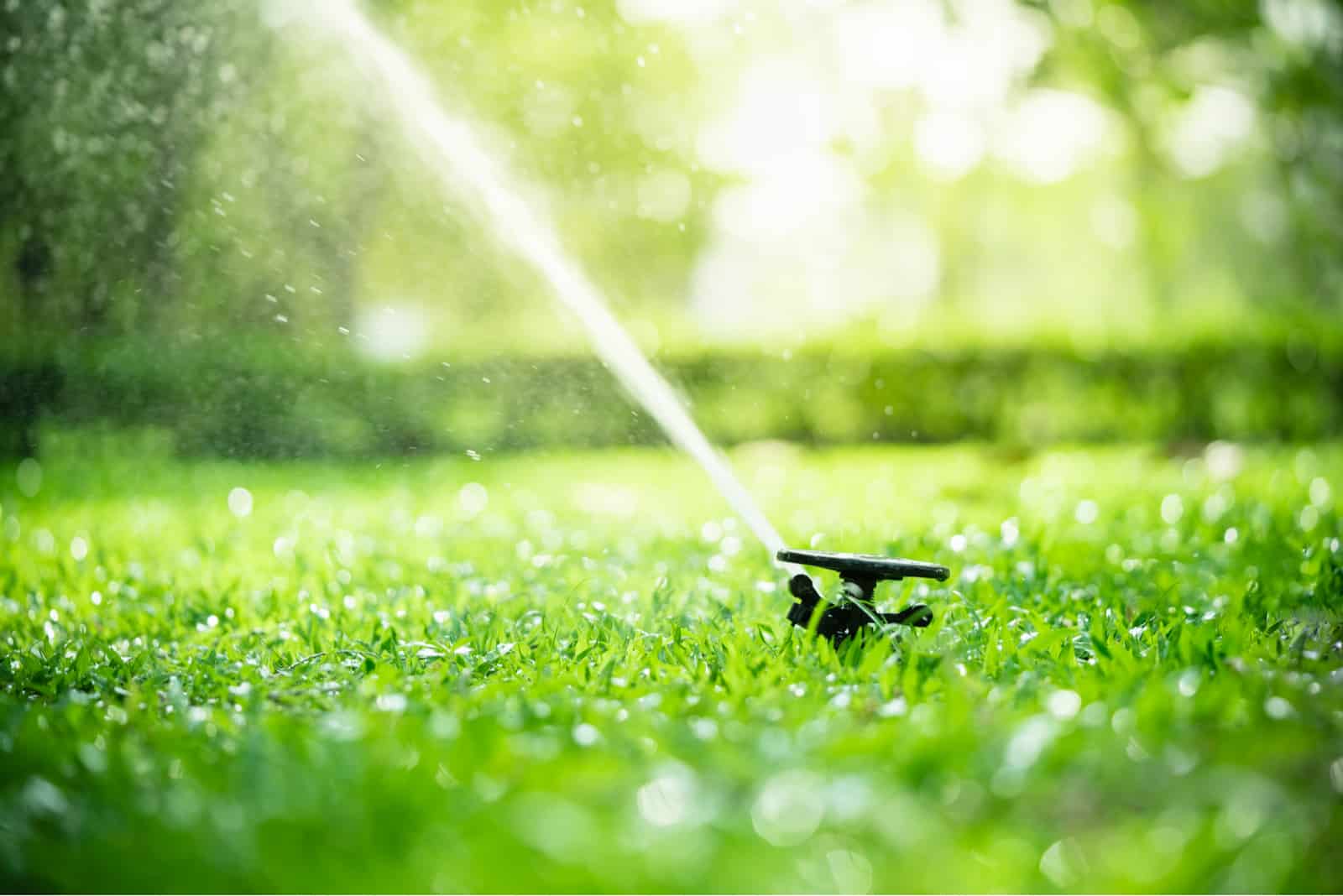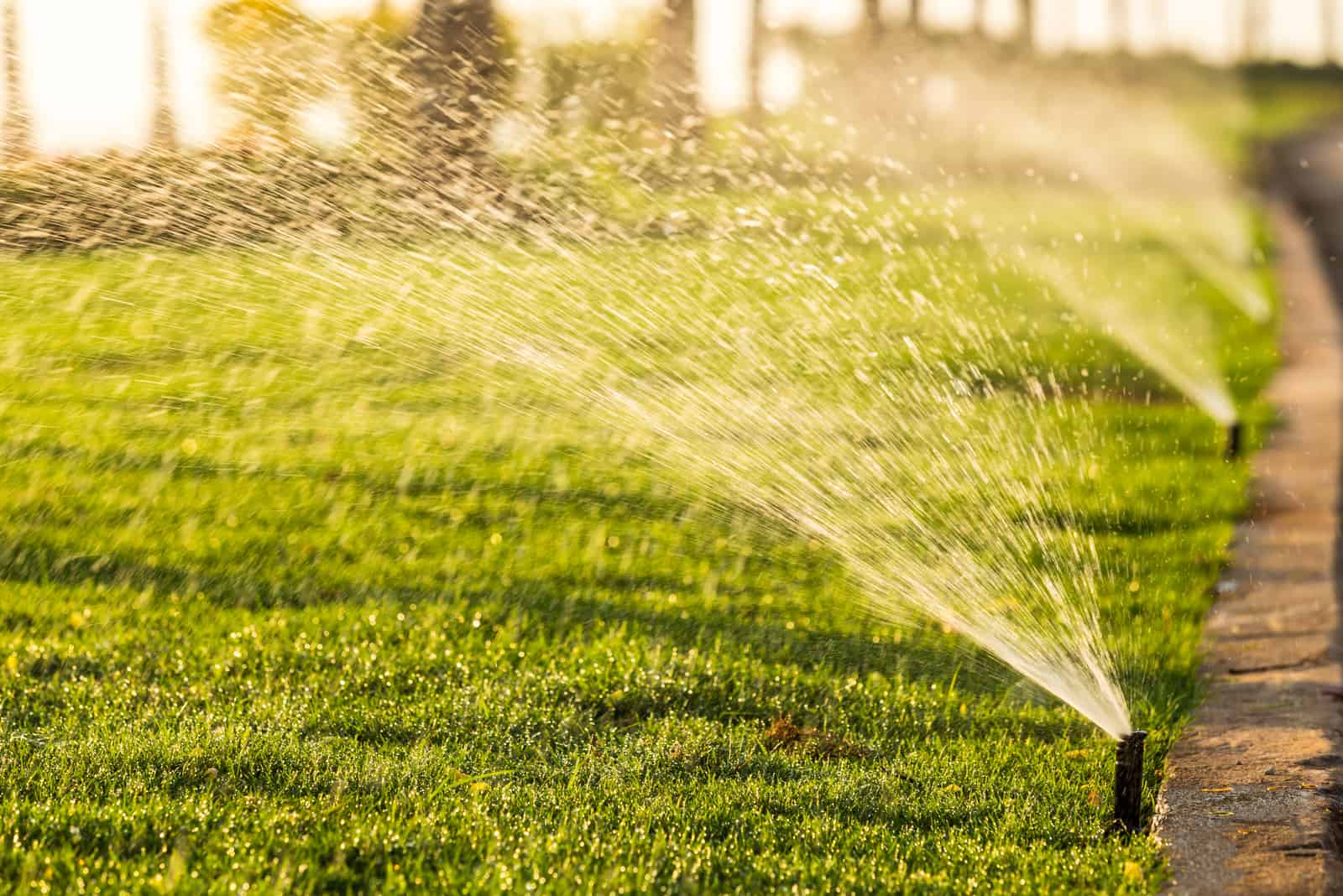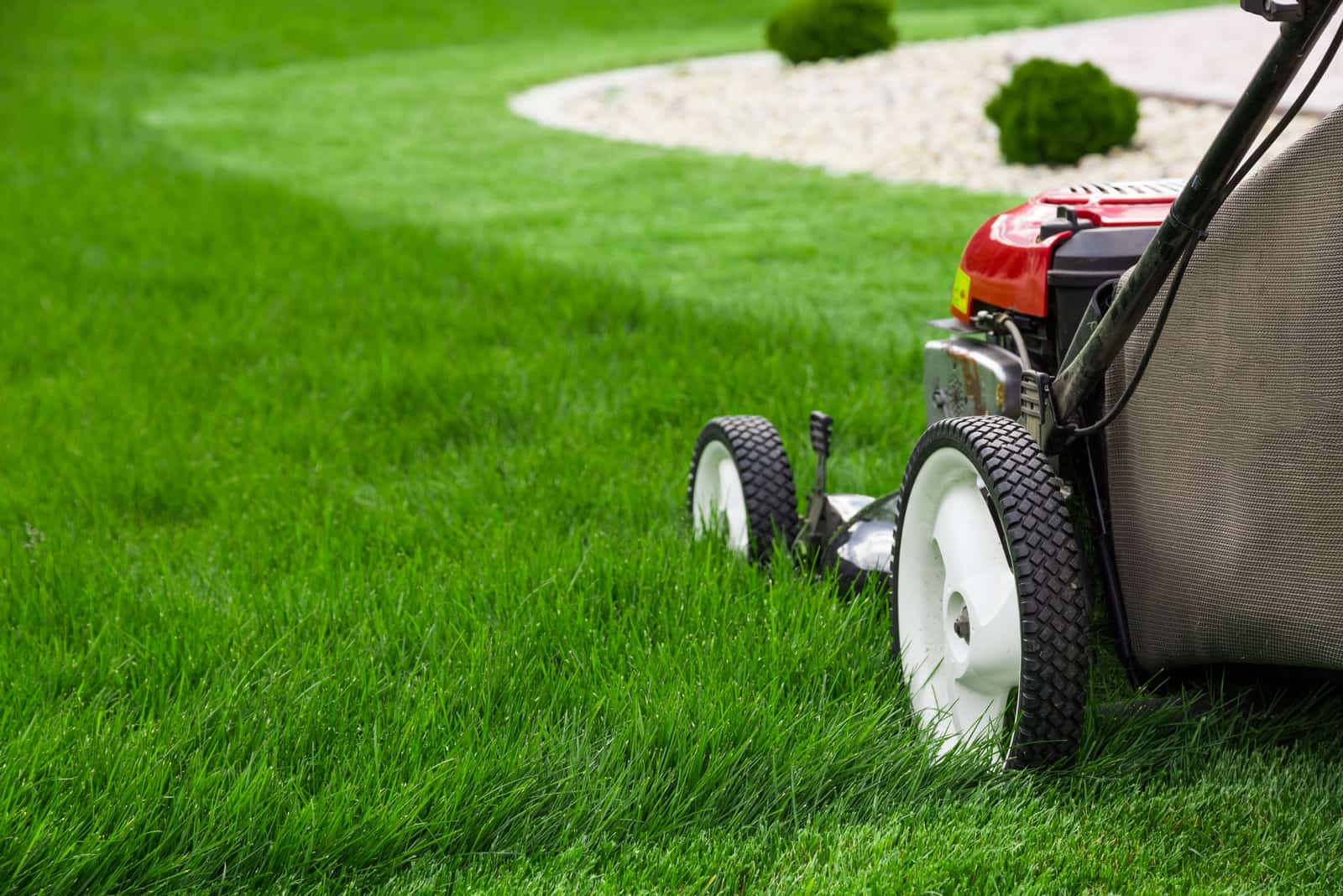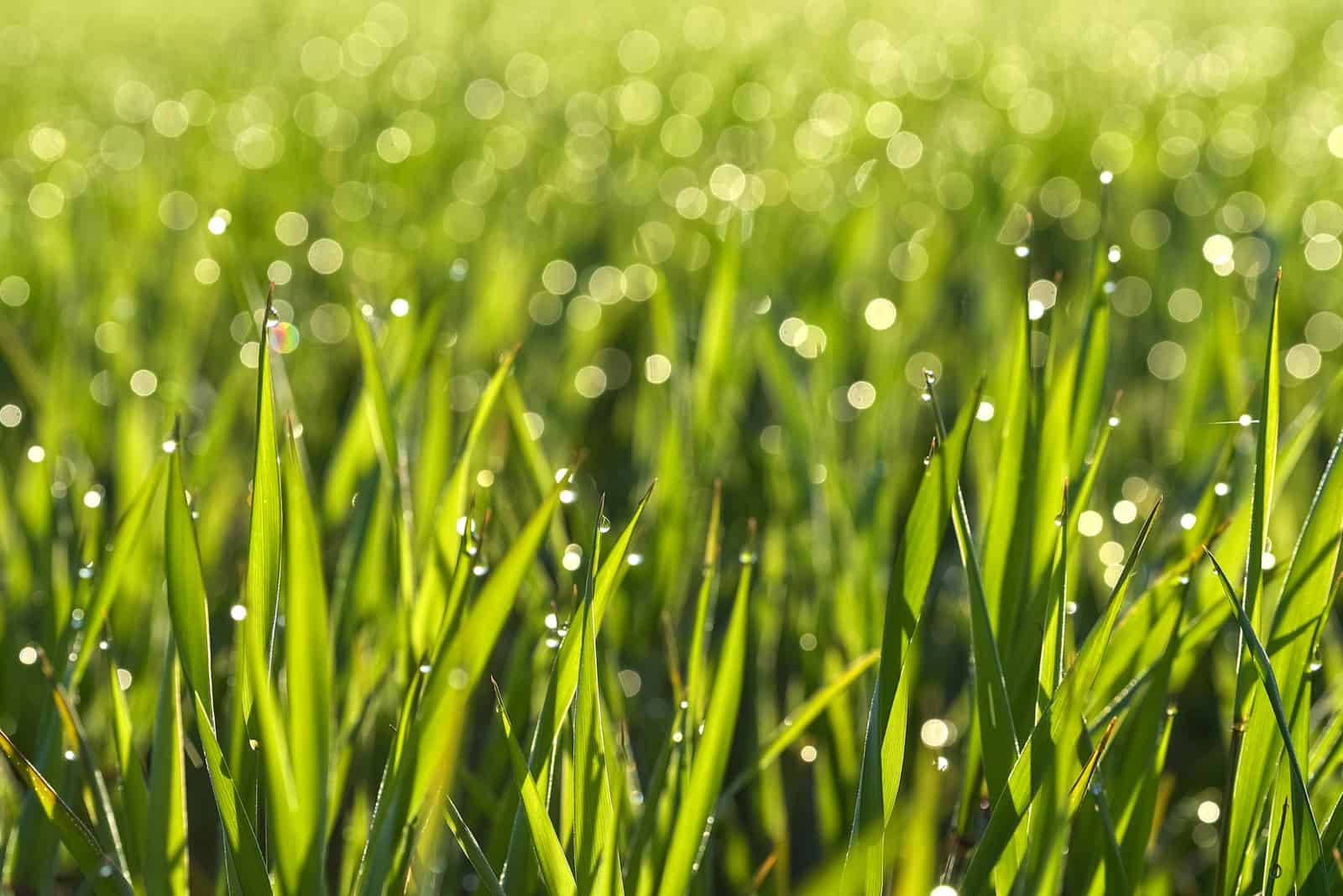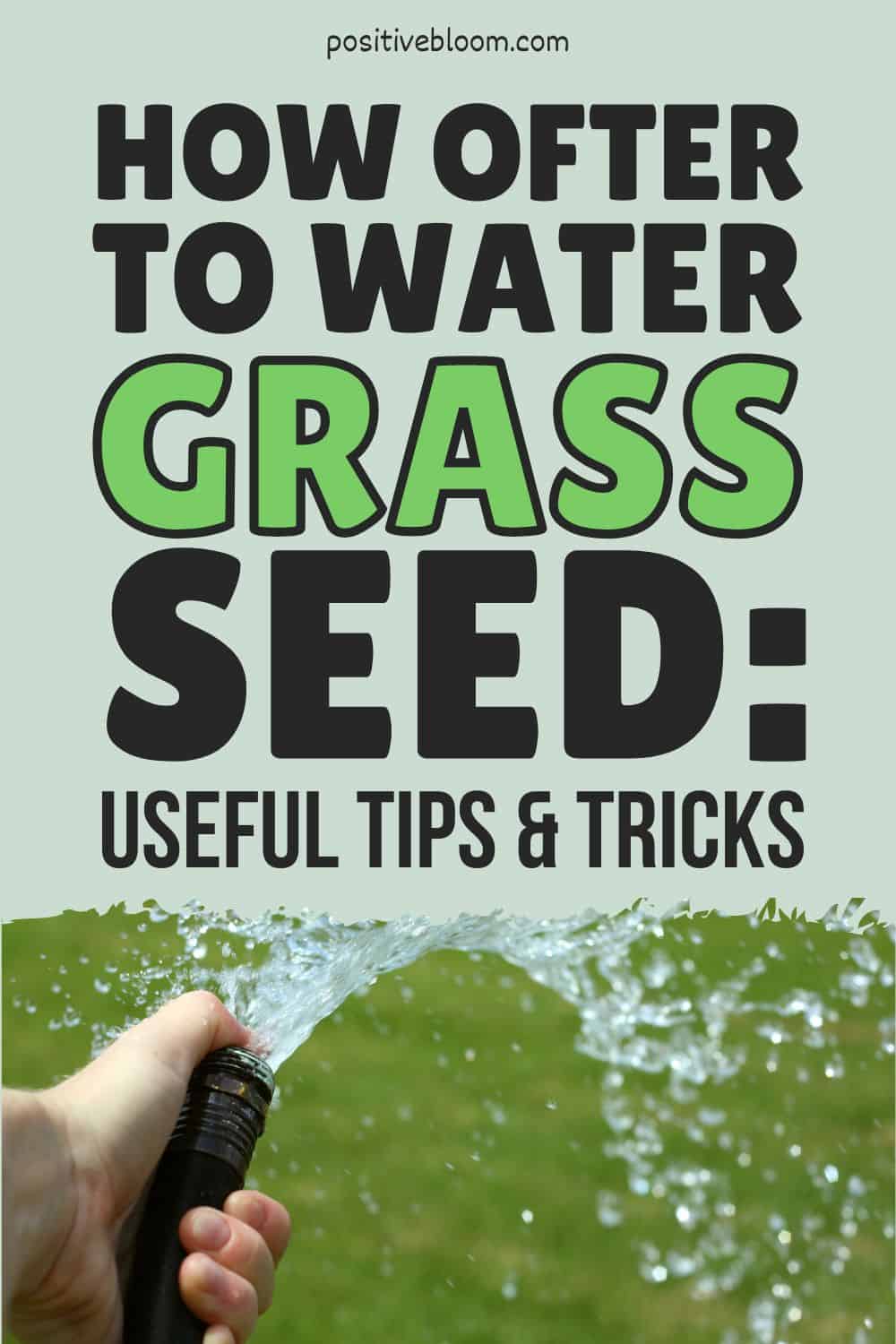If you started your lawn from seeds, prepare yourself for a long lawn maintenance journey! At the beginning of grass seed growth, it is important to provide just enough water to keep them growing and developing.
Watering your new grass seed is not as easy as you may think because too much water can easily suffocate these little babies, and too little water will dry them out.
Therefore, it’s very important to get the right watering schedule!
If you don’t, then all of the time and energy (and money) that you spent on soil prep and sowing were basically for nothing, and you will end up with a thin lawn full of empty patches.
Luckily, we are here to provide you with all the most important information on how often to water grass seed to keep your lawn lush and vibrant!
Let’s get started!
How Often To Water Grass Seed: The Essentials
Water and warm soil temperature are crucial for grass seed germination — and we need germination so our seeds can sprout and grow!
Each watering schedule is unique, especially because it depends on different factors, such as the climate in your region, weather conditions, soil type, and type of grass seed. You don’t have to water your new lawn three times a day if it is constantly raining, for example.
We are going to cover some basic rules about watering before going through factors that might impact watering needs and how to create a watering schedule.
1. Water The Area Before Planting Seeds
Watering before planting is important for several reasons:
• It will loosen the soil
• Dry soil exposes the seeds to birds that love eating your grass seeds
• Creates a favorable environment for the germination process
• Protects the seeds from the wind
• Grass roots move easier through moist soil
You should water the lawn area thoroughly for several days before planting. Make sure that the top six inches of the soil are moist as this will loosen up the soil and induce the germination process immediately.
Germination should occur roughly two weeks after sowing, though some grass seed types take longer to germinate, so just be patient!
If your grass seeds are not germinating you might have been overwatering your seeds, but more on that later.
If you aren’t sure whether the soil is wet enough, you can use a screwdriver by poking the ground with it to see if it penetrates the soil without much resistance, if so, then your soil is ready for planting!
2. Water Immediately After Planting
After you have sown the seeds, it is important to make the soil moist so the seeds can settle in. I usually don’t wait longer than 10 minutes to water them, though some gardeners wait about an hour after planting.
PRO TIP: Add mulch to prevent evaporation. Before watering your new seeds for the first time, you should add mulch to prevent evaporation from the soil. You should use straw mulch; just lay it out all over the seeded area and you are good to go!
3. Watering Twice A Day Should Do The Trick
Though watering requirements depend on different factors, new grass seeds should be watered twice a day in the early morning and late afternoon. These are the best times of day to water your new lawn because it allows water absorption and reduces evaporation.
You should water for about 10 minutes each time, and once the grass seedlings start growing and you have an established lawn, water less frequently but for a longer period of time (usually about 45 minutes).
This can vary from region to region, so make sure to keep the top 2 inches of the soil moist before the seedlings have emerged, and later keep just the top inch of soil moist.
Avoid frequent watering on rainy days because the rain will keep your seed moist!
How To Water New Grass Seeds
It is important to use the right watering technique and not wash away your new seeds!
For instance, if you point the hose directly at the seeds it can easily wash them away and you will end up with bare spots on your lawn. You should put your thumb over the hose opening to create a spraying effect or attach a hose nozzle.
You can also invest in a new irrigation system or install a lawn sprinkler system that can keep large areas of your lawn fresh and moist automatically. Oscillating sprinklers are best for new grass seeds due to their unique movements, which allow every part to get enough water.
Check out this video for more information:
Tips And Tricks For Getting The Best Lawn Possible
Follow these simple tips and tricks to make sure the grass is always greener on your side of the fence!
Before planting grass seeds, there are a few things you have to take into consideration:
• Climate in your area
• Soil type
• Weather conditions
• Sun exposure on your lawn
First, let’s take a look at what grass types are suitable for your region. If you live in Florida, check out these 7 grass types suitable for the crazy Florida weather!
Choose The Appropriate Grass Type
You might spend a lot of effort preparing the soil for planting and still end up with no grass! That’s why it’s crucial to consider other issues, such as picking the best grass for your lawn. Everyone desires the famed Kentucky bluegrass, with its magnificent blue-green color and unique glow, but you should first look at its requirements.
Some grasses, for example, prefer shady areas over full sun exposure, while others thrive in the opposite situation. Because grass varieties are primarily classified into warm-season grasses and cool-season grasses, I would recommend that you first assess the climate in your region.
Warm-season Grass Types
Warm-season grasses thrive in temperatures over 75 degrees Fahrenheit, however, they can survive in colder climates. Any temperature below 55 degrees Fahrenheit will turn the grass brown, though. These types should be planted in late spring and summer.
They include:
• Bahiagrass Argentine
• Centipede
• Zoysia
• Floratam St.Augustine
• Bermuda grass
Cool-season Grass Types
Temperatures between 60 and 85 degrees Fahrenheit are ideal for cool-season grasses, though they can withstand considerably lower temperatures. These types should be planted in fall or early spring.
They include:
• Bentgrass
• Fine Fescue
• Bluegrass
• Ryegrass
• Creeping Red Fescue
• Tall Fescue
What Grass Types Need The Least Amount Of Water?
If you are busy and don’t have time for watering your lawn frequently, I would suggest you plant grass types that require less water.
During the germination process, almost all grass seeds require approximately the same amount of water. However, once the lawn is established the watering session should be less frequent. In most cases you will have to provide about an inch of water each week to keep the grass growing happy and healthy!
Some of the more drought-tolerant types include Zoysia, Bermuda grass, Buffalo grass, Bahia grass, and St. Augustine.
Improve The Soil Quality
One of the most essential steps of having a healthy lawn is improving your soil. When choosing a grass type, you should know what type of soil you have and plant the grass seeds that are the most suitable for that soil type.
Common soil types are:
• Loam
• Sandy soil
• Clay soil
• Silt soil
Clay soil is compact and not so great because it lacks nutrients, so the seeds will have some trouble developing deeper roots. However, Zoysia, Kentucky Bluegrass, and Bermuda grass can normally grow in clay soil. Sandy soil is dry and has a lower pH, so it’s suitable for Centipede, Zoysia, and Bahia grass.
Silt soil is probably the best option because it’s rich in nutrients and can retain moisture. This makes it ideal for most grass types. Loam represents a combination of all three types, so it’s great if you want to have a lush and green lawn!
Another thing you should consider is the pH level of the soil; almost all types of grasses prefer a pH somewhere from 5.5 to 7.
Tips For Planting Grass Seed
• Always be aware of the climate in your area and sow grass seeds appropriate for it.
• Invest in high-quality grass seeds and avoid using seeds that have been inadequately preserved because some can go bad .
• Before planting the seeds, assess the pH level of the soil because grass seedlings need neutral to slightly acidic soil.
• Fertilize the soil before planting to ensure that the grass seeds get the appropriate nutrients.
• Do not plant them too deep in the ground as it will stop them from receiving the light and air they need to germinate and flourish. You can either use a spreader or do it by hand.
• Mulch can be used to keep the seeds in place and prevent evaporation in the newly sown area.
• Don’t use herbicides or weed killers before or after planting because they can stunt the germination.
• Install sprinklers. The grass will enjoy it and you will save time and energy, even if you have to pay some money.
Use Your Mower
Another crucial step in lawn care is mowing.
Before you mow the lawn, make sure it isn’t moist. Cutting wet grass makes it more prone to fungi and turfgrass diseases, which can destroy your existing lawn.
Avoid cutting the lawn too short because this can cause stress. Longer grass blades also help to preserve the soil and the seeds growing beneath them.
Make sure the mower blade is clean, sharp, and ready to use before the next mowing session. The mowing height varies depending on the grass variety, but it should be between 3.5 and 4 inches long in most cases. Mow your lawn once a week, ideally in the middle of the morning after the grass has had a chance to grow overnight .
How Long Will It Take For Grass Seeds To Grow?
It depends on the grass seed type and provided conditions. For instance, some grass types will germinate and grow in the first ten days after planting, while others can take about 30 days just to germinate.
It usually takes about 3 or 4 weeks for seeds to grow, and another couple of weeks for the grass to reach mowing height. The general rule is that it takes about 2 months to get a fully established lawn after planting the seeds.
The fastest growing grass types are Bermuda grass and Ryegrass. If you are in a hurry to have a fully established lawn, then consider planting these types.
Overseeding
Overseeding is another great way to make your lawn look thicker and greener, all you have to do is sow new seeds into an existing lawn to thicken it up!
Keep in mind that the timing of seeding is determined by the type of grass you’re using. If you have cool-season grass, for example, you should overseed the lawn in the fall or spring. Warm-season grasses, on the other hand, should be overseeded in late April.
Here’s how you do it:
1. Mow your existing lawn to a height of less than 2 inches.
2. Use a spreader or distribute the seeds by hand. Pay special attention to bare regions and thin areas.
3. Using the back of a rake, press the seeds down. This will assist the seeds in firmly anchoring themselves in the soil.
4. Apply a thin coat of compost to the seeds.
5. Use a phosphorus-rich starter fertilizer to help the roots develop and thrive.
6. Mow the seeds once they’ve grown about 3 inches tall. You can use these grass clippings as mulch.
How To Water An Overseeded Lawn
If you overseed, you need to treat your lawn as if it’s freshly planted. This means it needs to stay constantly moist. You should water it lightly twice a day for the first five days, and then switch to watering thoroughly for the next couple of days.
After the new grass has grown, continue with the regular watering schedule.
Apply Fertilizers To Improve Nutritional Content
Nitrogen, potassium, and phosphorus (the legendary NPK formula) are the three most critical nutrients, and each lawn fertilizer should include at least one or all three. This ratio is dependent on the results of a soil test, as well as the kind of grass you’re growing.
Because the grass will absorb all available nutrients for growth and development, fertilizer should be applied to the soil before sowing the seeds and throughout the growing season.
You can use either liquid or granular fertilizer. Liquid fertilizers should be applied every other week and the instructions should always be closely followed, while granular fertilizers are usually used once a month.
If you don’t have much time to care for your grass, I recommend using a slow-release fertilizer. This sort of fertilizer only needs to be applied once in the early spring and it will feed your grass for the rest of the year by slowly releasing nutrients.
Check out the best fertilizers for new sod if you have recently installed it!
Aeration & Dethatching
Aeration is a great way to improve air circulation in the soil, and also to allow better water and nutrient absorption. There are a few things you can do after aerating your lawn to make it look even better!
Dethatching is the process of removing the thatch that has accumulated on the soil, which prevents the grass from receiving vital nutrients. The term “thatch” refers to a layer of organic materials, like grass clippings and leaves.
You can either start a new DIY project and rent the machines necessary for these processes, or call a lawn maintenance service and hire professional help.
Frequently Asked Questions
1. How do you water grass seeds during a drought period?
Some areas suffer from water shortages, and it can be difficult to know what to do in this case.There are a few options that can save your lawn. First, you should buy rain barrels and put them outside to collect rainwater for your lawn.
You can also recycle, which means that you can use boiled water from cooking to water your lawn (let it cool down!). You can also use cleaning water, but it shouldn’t contain any soaps and chemicals.
2. How much water should I give to newly planted grass seeds?
Newly planted grass seeds usually need about two inches of water each week. It would be best if you watered them twice a day — in the morning and in the evening. Water them for about 5 to 10 minutes every day!
3. Can you overwater grass seeds?
Yes, you can drown these little seeds and suffocate them without even realizing it. In this case you will either end up with no grass or a lawn full of patches and bare spots!
If you give them more than enough water, it will prevent air circulation and your grass seeds won’t get the oxygen necessary for sprouting and germinating. Too much water will just lead to rotting.
Be mindful of the weather conditions in your area, and don’t water them frequently after heavy rain. Keep the watering schedule to twice a day and don’t water them for more than 10 minutes!
4. How long does it take for grass seeds to germinate?
It usually takes about 10 days for grass seeds to germinate, although some grass seeds might take several weeks to germinate and sprout!
You should be aware of what type you plant and follow the growth of your new grass: if germination doesn’t occur, then something must’ve gone wrong, but if you act immediately you might still have time to fix it for the upcoming season.
In most cases germination takes longer than a few days, so you just have to be patient!
To Sum Up
Taking care of a lawn is not an easy task, but it is definitely worth it!
There’s no better feeling than waking up in the morning and drinking coffee on your fresh new lawn. If you have just started your gardening journey and want to plant new grass seeds, then you have come to the right spot!
Our thorough analysis of how often to water grass seed has all the answers, you just have to find them.
We believe that you can do it, and if you fail, don’t worry because you can always start again the next season.
If you aren’t up to starting your lawn from seeds, you can always install new sod or get yourself some grass alternatives.
I wish you the best of luck!
Like this post? Share or pin it for later!

